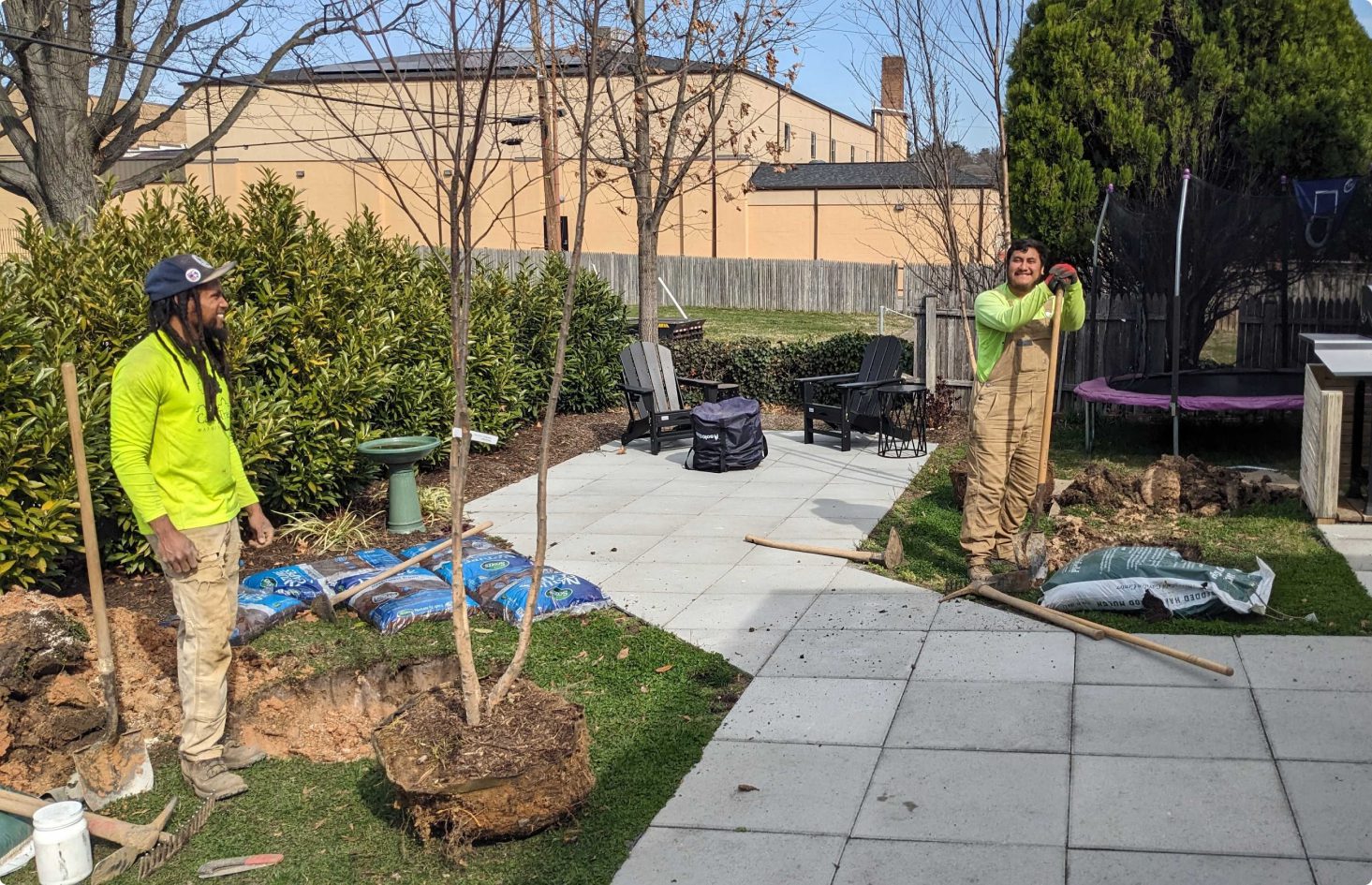Follow these simple, time-saving steps to properly care for your tree:
Water, Mulch and Protect
Ensure your tree receives 25 gallons of water per week, equal to 1.5 inches of rainfall. Prevent wasteful runoff by:
- Turning on a hose on low for a half hour at the base of the tree.
- Place a 5-gallon bucket with holes in the bottom at the base of the tree. Fill the bucket up five days a week.
- Add a 25-gallon slow-release watering bag. Fill it up just once a week.
Mulch each season to keep the soil moist and to control weeds naturally. When mulching:
- Use shredded bark or leaf compost.
- Apply using the 3-3-3 rule: 3 inches of mulch in a 3-foot ring with a 3-inch space around the tree trunk.
- Avoid volcano mulching.
Keep weed whackers, lawn mowers and wildlife clear from trees.
- Install a trunk guard at the base of the tree to keep its nutrient and water system from being cut. Trunk guards also protect trees from rodents and other small animals.
- Install deer fencing if necessary.
Pruning Tips
Tools
- Use clean, sharp tools.
- Sanitize your tools in between pruning different trees.
Cutting
- Always cut to a bud, lateral branch, or main trunk.
- Do not leave stubs.
- Use the three-cut method for large limbs which are more than two inches in diameter.
- When pruning back to a main stem or another branch, do not make a flush cut. Instead make a cut outside the raised branch collar. The collar contains chemicals that are a barrier against pathogens and help the tree form woundwood.
- Do not remove more than one-quarter of the living crown of a tree at one time. If it is necessary to remove more, do it over successive years.
Common myths
- Dress the wound. For most species, dressings can damage the formation of woundwood. The only benefit of wound dressings is to prevent introduction of pathogens in the specific cases of Dutch elm disease and oak wilt.
- When removing a branch from a tree, the final cut should be flush with the stem to optimize healing. First of all, trees don’t “heal,” they seal by compartmentalizing wounds and generating woundwood over the wounded area. Flush cutting removes the “branch collar,” creating a larger wound than if the branch were removed outside the collar. The spread of decay inside the tree is greater with flush cuts.
- Tree topping is the proper way to prune a tree. No. Tree topping is the most detrimental form of pruning. Topping a tree creates large wounds that allow rot and fungal decay to enter the tree. Topped trees are more likely to break apart in storms than trees that retain their natural shape.
Timing
- Anytime is the best time to remove broken, diseased, or damaged wood.
- Structural pruning is best done in the dormant season (roughly December to mid-March). When leaves are down from deciduous trees, you can see and evaluate the tree’s structure.
- For some trees that flower in early spring, pruning is best after flowering; while other flowering species should be pruned in the dormant season to reduce the chance of transmitting disease. Check with your local arborist.
Hire a certified arborist when work cannot be performed with hand tools or poses a serious safety risk.
